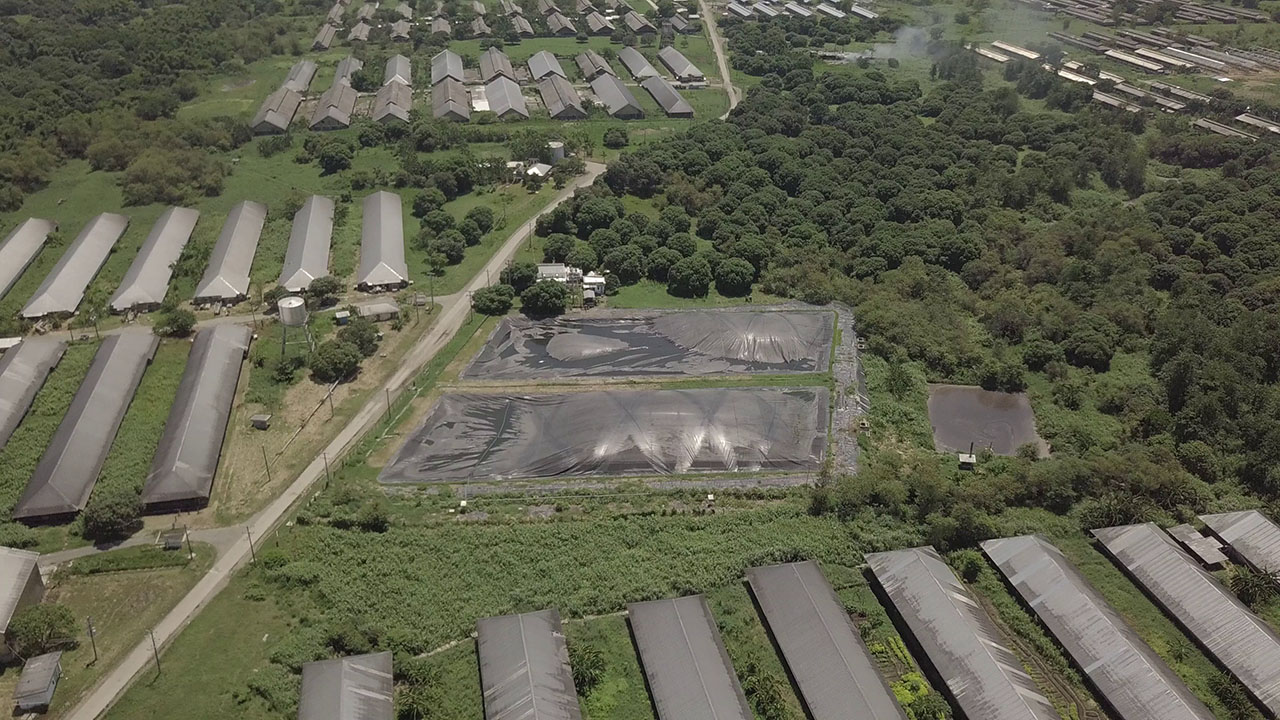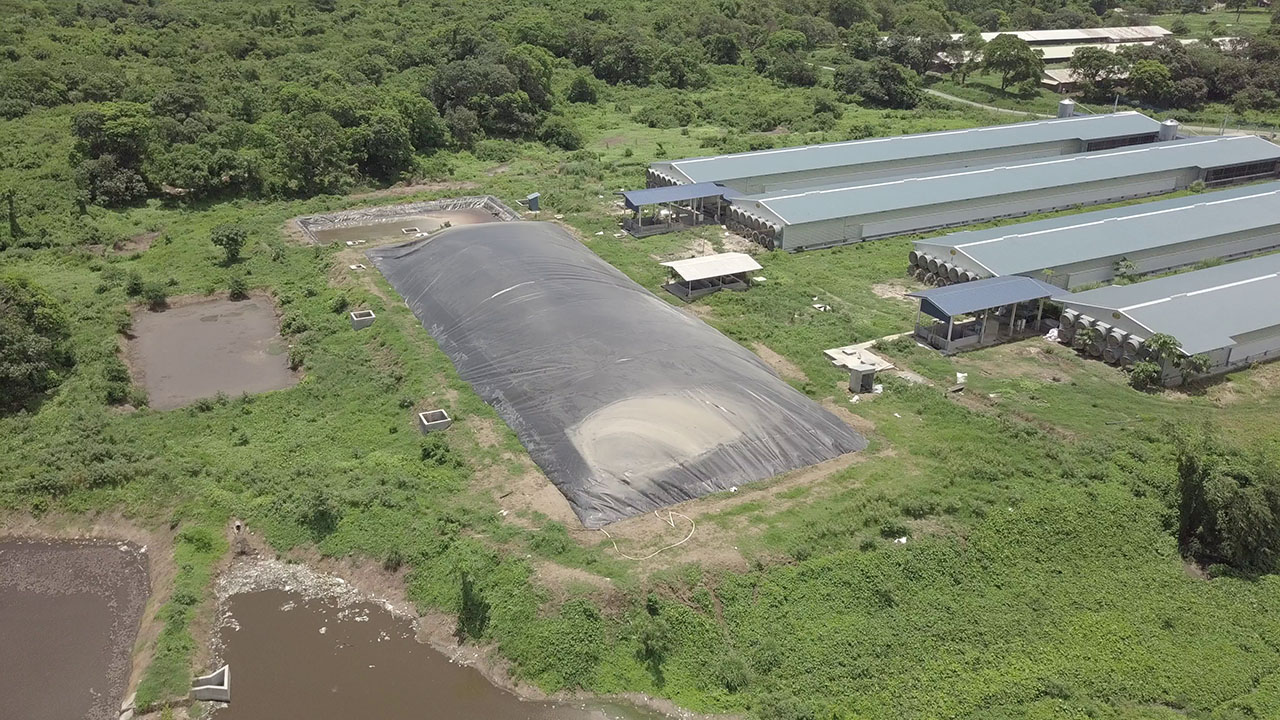Did you know that URC’s Agro-Industrial Group has nearly half a million chickens on its layer farm in Naic, Cavite? This massive number is required to satisfy the market demand for Robina Farms eggs, so between 350,000 to 360,000 eggs are laid each day. Of course, eggs aren’t the only things the chickens produce. Chickens excrete around 8 to 11 lbs. of fecal matter a month, approximately 1/3 lb. every day. Multiply that by the number of chickens URC-AIG has and it could be a major problem. Thanks to biogas technology, it isn’t.
Biogas is a renewable energy source produced by breaking down organic matter—which can be agricultural waste, manure, plant material, sewage or food waste—in an anaerobic environment (i.e., without oxygen). In URC-AIG’s case, it has two sources of material. The first is the chicken dung from its Naic facility in Cavite, also called Robina Farms 23 (RF 23); while the second comes from the pig farm in San Miguel, Bulacan, known as Robina Farms 12 (RF 12). Both farms have their own biogas plants.

An aerial view of the biogas facility (center) at Robina Farms 12, in Bulacan.
Each day, the animal waste is collected into a large container called a digester, where it is combined with microorganisms that break down the organic material. The process creates biogas, composed primarily of methane and carbon dioxide. At RF 12, the collected biogas powers a 500KVA power generator, while a 270KVA generator is powered at RF 23.
According to Dr. Dante Palabrica, the Director of Farm Operations for URC-AIG, the idea to generate electric wealth from animal waste was hatched by Vincent Henry Go, URC-AIG Vice President and Group General Manager. “In the past, we were having problems with the waste from the chicken houses. Because of this, Mr. Vincent said, let’s go for biogas. In so doing, we are eliminating the waste, and saving on our electricity bills.”
Thanks to the biogas plant, there is no need to have the toxic chicken waste hauled from the facility. In the process of creating biogas, the waste is broken down into water and a minimal amount of solids that come out of the digester, which can be used as fertilizer or soil amendments, also called “abono” in Filipino.

The biogas facility in Robina Farms 23, in Naic, Cavite.
According to Engr. Bernardo “Bernie” Gabriel, the layer farm, or RF 23, started its biogas operations in May 2015, and by the end of that year it had generated 551,980 kwh of electricity, saving the company an estimated 3.88 million pesos. The savings increased to 4.79 million in 2016 and 6.34 million in 2017, before a slight dip to 5.21 million in 2018. This year, savings are projected to increase again, having reached 2.87 million already by the end of July.
For the piggery, or RF 12, the savings are even bigger, due to the larger amounts of waste excreted by the pigs. In 2017, the farm saved 11.55 million in electricity costs, followed by 8.61 million in 2018. RF 12 expects greater savings this year, having already saved 5.83 million in the first seven months alone. At this facility, the idea to produce biogas was conceived much earlier. In Dr Dante’s recollection, he contracted a company to develop the biogas plant under a “build and transfer” setup several years ago. However the amount of biogas collected was smaller than expected, due to ammonia leakage in the waste collection method. Realizing this later on, URC-AIG changed the design and subsequently improved the biogas yields.
URC-AIG’s use of biogas to partially supply its various farms’ electric needs was recognized by its parent conglomerate, JG Summit Holdings Inc, in 2016. In that year, URC-AIG won in the category for Business Outperformance at the Pride in Performance Awards, which are presented to the business units of the conglomerate that have made a significant impact during the past business year. Speaking about the honor, Doc Dante said, “Of course, we were happy, because it acknowledges that we not only saved money on electrical costs, but at the same time, we are protecting the environment. That’s the most important thing.”
For Doc Dante, sustainability will continue to be a key issue moving forward. Aside from expanding the biogas project to other farms in the near future, water management is another environmental issue the group is tackling head on. “In the pig farm we use 1.5 million gallons a day, and in the layer farm, 800,000 gallons a day. Our aim for sustainability is to reduce this by 15%, for both farms. To reduce our water consumption--that’s my promise towards greater sustainability.
For more information on URC's Agro-Industrial Group, visit their website, robinaagripartners.com


